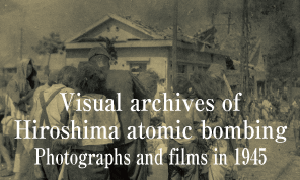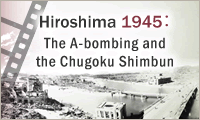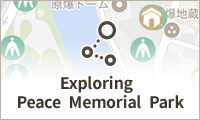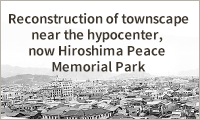Documenting Hiroshima 80 years after A-bombing: On February 25, 1981, Pope visits Hiroshima for first time
May 6, 2025
“War is the work of man”
by Minami Yamashita, Staff Writer
On February 25, 1981, while in Japan, Pope John Paul II visited the Peace Memorial Park in Hiroshima’s Naka Ward. In cold weather with light snowfall, he delivered an “Appeal for Peace” to an audience of about 25,000 citizens and Catholics gathered in the park. His speech began with: “War is the work of man.”
Tears formed in his eyes when the horror of the atomic bombing was explained
The Pope wished to visit Hiroshima “out of a deep personal conviction that to remember the past is to commit oneself to the future.” He offered flowers at the Cenotaph for the A-bomb Victims, then knelt in prayer for one minute. When Takeshi Araki, the mayor of Hiroshima, explained the horror of the atomic bombing, tears formed in his eyes.
The beginning of his appeal was read aloud in Japanese, which he had been repeatedly practicing. Using nine different languages, he urged the leaders of each country to disarm and abolish all nuclear arms, stating: “The human suffering that began here has not been fully drawn up. To remember Hiroshima is to commit oneself to peace.”
News of the visit to Hiroshima by the leader of the Roman Catholic Church, considered to be the vicar of Jesus Christ on earth, and of the largest Christian denomination, was telegraphed around the world. The people of Hiroshima were deeply moved by his visit.
Chiaki Takenaka, 77, Mihara City, lived in Nishi Ward at that time. She watched the Pope in the park with her friend, who invited her to go. She said: “I thought I should not miss this opportunity, as his coming to Hiroshima was of great significance. I am glad I could be a part of the special moment.”
Akihiro Takahashi, the director of the Hiroshima Peace Memorial Museum who experienced the bombing when he was 14 years old, acted as the Pope’s guide through the museum. When Mr. Takahashi asked him to use his influence for world peace, he firmly squeezed his right hand, which still bore keloids. “Every word of his appeal continues to live vividly within me,” he wrote in his memoir Hiroshima Inochino Dengon (in English, “Hiroshima: Message of life”) published in 1995.
Lei made by a survivor
Yoshie Fujieda, a survivor of the atomic bombing who died in 2001 at the age of 83, made a lei of paper cranes to present to the Pope. In an interview with the February 23, 1981, edition of the Chugoku Shimbun, she said with tears in her eyes: “I could console the souls of the atomic bomb victims. I could not fold one thousand cranes as I get tired easily. However, I pushed myself, thinking that it was my duty as a survivor to convey the thoughts of the people of Hiroshima.”
Ms. Fujieda, who was exposed to the atomic bombing near Yokogawa Station (now located in Nishi Ward) when she was 27 years old, lost her mother and two little children in the bombing. She cremated their remains by herself at the ruins of her home in Sorazaya-cho (now part of Naka Ward). “Black smoke billowed high into the air. Tears trickled down. Those were the hottest and saddest tears of my life,” she wrote in her memoir, contained in the 1986 book Shuki Hibakushatachino 40-nen (in English, “Memoirs: Forty years for atomic bomb survivors”). After the war, she lived in a shack in the Motomachi district (now part of Naka Ward) for a long time. Despite suffering from hearing loss, she raised her children born after the war.
Following the Pope’s visit, she launched a campaign to build a monument commemorating the “footprints of the peace pilgrim.” In response to her wishes, Tomin Harada, a physician and chairman of the World Friendship Center, and others formed a committee to build a commemorative monument, and began to raise funds for construction costs. Ms. Fujieda also made a donation by selling her treasured precious metals.
In 1983, the monument made of marble from Italy was placed in the lobby of the museum. The 1.8-meter-wide, 3-meter-high sculpture, which symbolizes harmony, stability, and coexistence of the world, is inscribed with a passage from the Pope’s appeal in both Japanese and English. It still conveys the Pope’s message to visitors from home and abroad.
(Originally published on May 6, 2025)








